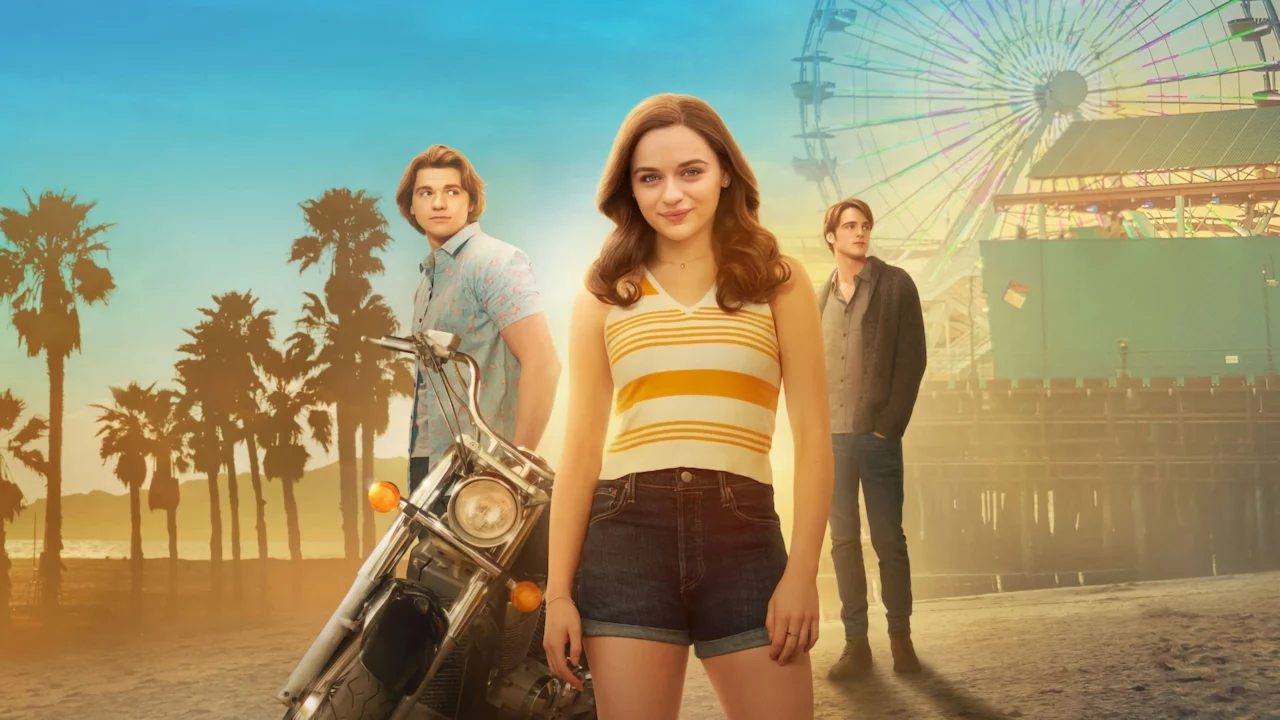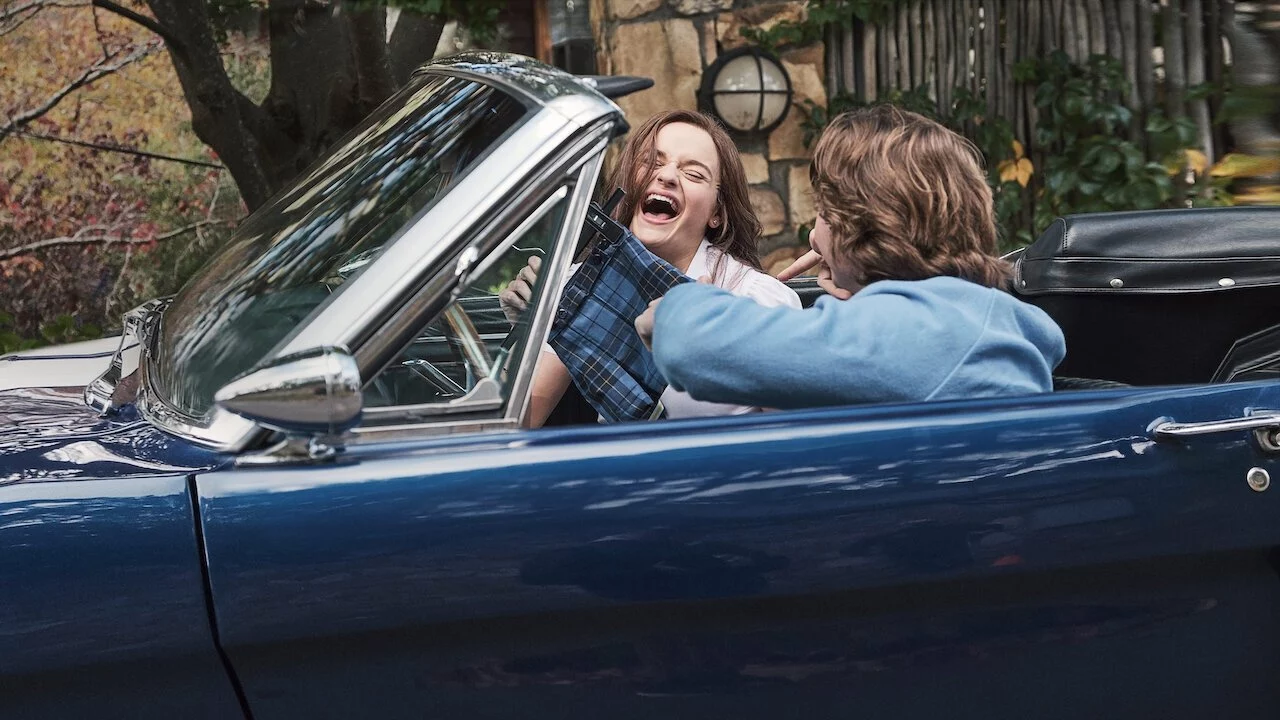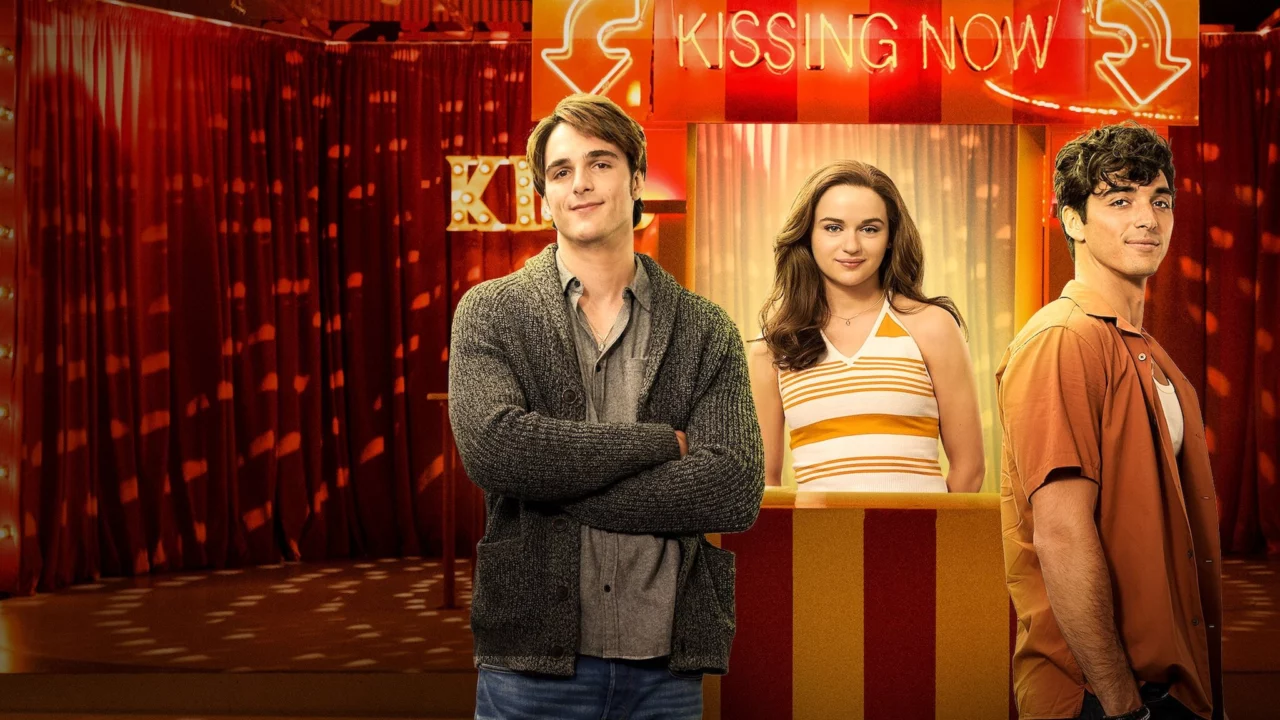
The Kissing Booth 2 (2020) Movie ft. Joel, Jacob, and Joey
Netflix’s romantic sequel returns with familiar faces in unfamiliar territory. Joey King reprises her role as Elle, joined by Jacob Elordi’s Noah and Joel Courtney’s Lee in this 2020 continuation. Vince Marcello takes the director’s chair again, welcoming newcomers Taylor Zakhar Perez and Maisie Richardson-Sellers to shake up the established dynamics.
The story moves forward from summer romance to autumn challenges. Elle enters her final high school year while Noah begins his Harvard journey. This physical distance creates emotional turbulence that drives the film’s central conflicts and character growth.

Plot and Storyline
This second chapter expands beyond simple romance into complex relationship territory. Elle faces mounting pressure as graduation approaches, forcing decisions about her future while managing present complications. Her bond with Noah stretches across state lines, tested by new faces and old insecurities.
Marco enters as the magnetic new student who disrupts Elle’s comfortable routine. His presence creates a triangle that feels genuine rather than manufactured. Meanwhile, Chloe appears in Noah’s college world, sparking Elle’s worst fears about long-distance relationships. The film builds tension through these parallel romantic threats.
The narrative weaves together multiple storylines without losing focus on Elle’s emotional journey. Her friendship with Lee encounters new obstacles as his girlfriend Rachel demands more attention. I found these friendship dynamics particularly realistic, showing how relationships evolve as people mature.
Each subplot connects to Elle’s central dilemma about her future path. College applications become more than paperwork – they represent choosing between different versions of herself. This decision carries weight that elevates the story beyond typical teen romance fare.

Cast Performance
Joey King anchors the film with natural charisma and emotional depth. Her portrayal of Elle feels authentic, capturing teenage uncertainty without falling into caricature. King navigates comedy and drama equally well, making Elle’s struggles feel genuine rather than contrived.
Taylor Zakhar Perez brings magnetic energy as Marco, creating a character who feels like a real person rather than a plot device. His chemistry with King feels effortless, making Marco’s appeal understandable. Perez learned choreography and guitar for the role, and this preparation shows in every scene.
Jacob Elordi returns as Noah with more subdued energy than the first film. His performance reflects Noah’s new circumstances at college, showing growth while maintaining the character’s core appeal. The distance between Elle and Noah translates effectively to screen chemistry that feels strained in realistic ways.
Maisie Richardson-Sellers creates a memorable Chloe without relying on villain tropes. She brings intelligence and warmth to what could have been a thankless role. Her scenes with Elordi feel natural, making Elle’s jealousy completely understandable.
The supporting cast, including Molly Ringwald as Mrs. Flynn, provides stable foundation for the younger performers. Ringwald’s presence adds gravitas to family scenes, reminding viewers of the adult perspective on teenage drama.

What We Liked
The sequel improves upon its predecessor in meaningful ways. Character development feels more sophisticated, with Elle making smarter choices throughout her journey. Her growth feels earned rather than imposed by the script. I appreciated how the film respects its audience’s intelligence.
Visual storytelling elevates the material beyond its rom-com origins. The cinematography distinguishes between locations effectively, using lighting and color to support the emotional journey. California scenes glow with warmth while Boston segments feel cooler and more distant.
Musical elements enhance rather than interrupt the narrative flow. Dance sequences feel integrated into the story, particularly the competition scenes that showcase the cast’s physical preparation. These moments provide genuine entertainment value while advancing character relationships.
The film addresses real issues facing teenagers without becoming preachy. College applications, changing friendships, and relationship evolution all receive thoughtful treatment. These elements ground the romantic comedy in recognizable reality.
New character dynamics refresh the formula without abandoning what works. Marco and Chloe add complexity without creating unnecessary conflict. Their presence forces existing characters to examine their relationships more deeply.
What Could Be Better
The film’s ambitious scope occasionally works against it. Multiple storylines compete for attention, preventing some from receiving adequate development. Certain plot threads feel rushed while others drag unnecessarily. Better editing could have improved the overall pacing.
Runtime exceeds optimal length for this type of story. At over two hours, the film tests audience patience with extended sequences that don’t advance the plot. Some romantic montages feel indulgent rather than necessary for character development.
Communication problems drive too many conflicts in ways that feel artificial. Characters avoid obvious conversations that would resolve misunderstandings quickly. While this creates drama, it sometimes undermines character intelligence and viewer investment.
The screenplay relies on convenient coincidences to move the plot forward. Certain developments feel forced rather than organic, particularly during the climactic sequences. More natural progression would strengthen the overall narrative impact.
Diversity representation remains limited despite introducing characters of color. The film’s world still feels predominantly white, missing opportunities to reflect its audience’s actual demographics. This limitation reduces the story’s universal appeal.
Critical Reception
Professional reviewers offered mixed responses to the sequel. Rotten Tomatoes compiled 27% positive reviews from critics, though audience scores showed more enthusiasm. This gap reflects the difference between critical expectations and fan satisfaction.
Independent critics noted improvements over the original while maintaining reservations about the franchise’s overall direction. Several reviews praised King’s performance while questioning the screenplay’s reliance on familiar tropes.
Major publications acknowledged the film’s entertainment value while critiquing its artistic ambitions. The consensus recognized the sequel as superior to its predecessor without reaching exceptional quality. Most critics appreciated the less problematic approach to relationship dynamics.
Entertainment industry observers noted the film’s commercial success despite critical reservations. This pattern reflects Netflix’s strategy of prioritizing audience engagement over critical acclaim for certain properties.
Audience Response
Viewers embraced the sequel more warmly than critics anticipated. Netflix reported strong viewing numbers during the film’s initial release period. The platform’s data showed significant re-watching behavior, indicating genuine audience affection.
IMDb ratings reflect moderate approval at 5.7 out of 10, suggesting audiences found enough value to recommend the film. User reviews split between enthusiastic fans and disappointed viewers seeking more sophisticated storytelling.
Social media response highlighted positive elements including cast chemistry and improved production values. Many viewers appreciated the sequel’s attempts to address criticisms of the original film. The pandemic timing may have increased appetite for escapist entertainment.
Fan communities rallied around the film despite its flaws, creating continued interest in the franchise’s future. This support demonstrates the story’s emotional connection with its target demographic.
Final Verdict
The Kissing Booth 2 succeeds as improved entertainment while falling short of exceptional filmmaking. The sequel addresses several predecessor problems without fully escaping the franchise’s limitations. King’s performance and enhanced production values elevate material that remains fundamentally lightweight.
The film works best when focusing on genuine relationship challenges rather than manufactured drama. Dance sequences and visual appeal provide consistent entertainment value. New characters add welcome complexity without overwhelming the established dynamics.
I found the movie most effective during quiet character moments that explore growing up’s emotional complexity. These scenes demonstrate the story’s potential when freed from commercial constraints. The film’s heart lies in authentic teenage experiences rather than romantic fantasy.
For existing fans, this sequel provides satisfying continuation with noticeable improvements. Newcomers may find enough charm to overlook obvious flaws. The film achieves its modest goals while hinting at unrealized potential for deeper storytelling.
Rating: 3/5
